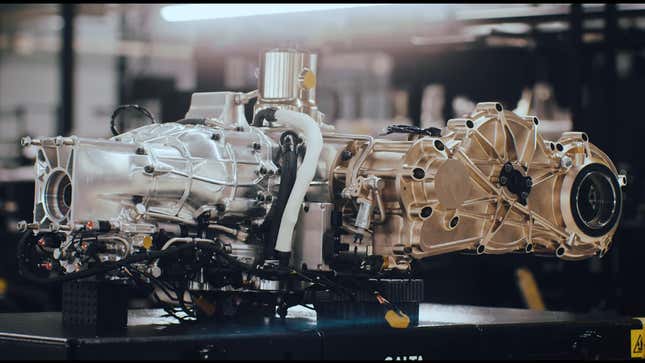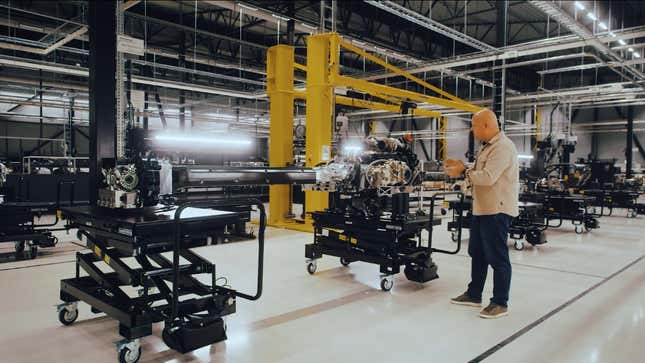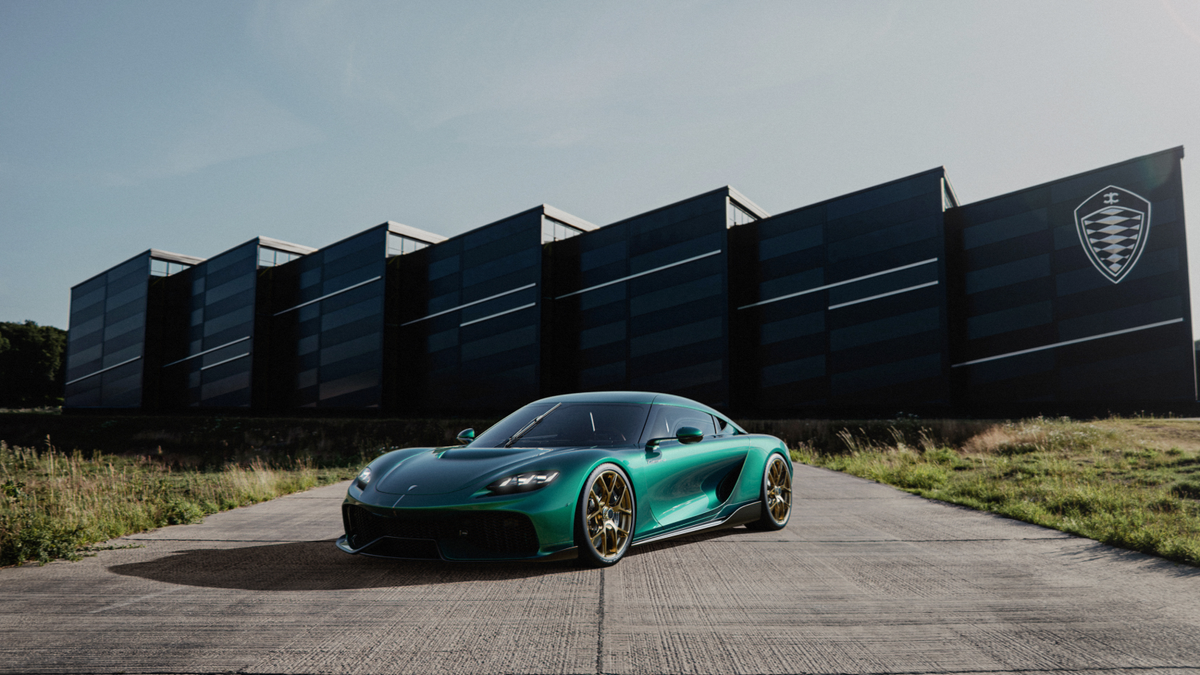Hypercar maker Koenigsegg is renowned for its meticulous attention to detail and over-the-top engineering. It’s a practice that’s worked out well for the brand, as it’s set countless world records and sits near the top of the hypercar tree. To lift the lid on some of the engineering feats that helped it get there, Koenigsegg has done a deep dive into the wild engineering behind its 249-mile-per-hour Gemera.
The Koenigsegg Gemera is the closest you’ll get to a practical car from the Swedish brand, as it’s a four-seat family hauler with two enormous doors and luggage space for most of your earthly pleasures. It’s also capable of hitting 62 mph in less than two seconds, tops out at 249 mph and will even hit 180 mph on clean electric power. Very practical.
The car is super light weight, with carbon fiber on almost every surface, but the true secret to its speed lies in the power that’s underneath. We’re talking a five-liter V8 that produces 1,500 horsepower, an 800 hp electric motor and a bespoke transmission that ensures all that power is directed to the car’s four wheels.
To explain some of the secrets of this formidable powertrain, Koenigsegg boss Christian von Koenigsegg has dug deeper into the workings of his brand’s family hauler, and it is fascinating.
The video, which is linked above for your enjoyment, looks into the transmission of the Gemera, which is an evolution of the nine-speed Light Speed gearbox that Koenigsegg fits to the Jesko. In the Gemera it’s been tweaked slightly and renamed the Light Speed Tourbillon Transmission. Fancy.
The Tourbillon packs in the same nine forward gears, but loses reverse as this is handled by the car’s electric motor. This means there’s one less clutch, just six in the Gemera, which each handle the shifts between three forward gears. A clutch isn’t the only thing lost from the Gemera, as it also loses a starter motor and will instead start up under electric power.
The most distinctive element of the transmission, however, is the way it delivers power to the wheels. As the packaging in the Gemera has been condensed to ensure the car still has a usable luggage area, the gearbox has been designed to wrap around the car’s V8 engine. As a result there’s a drive shaft out the front that directs power to the front wheels, and then a hydraulic clutch on either side of the transmission that’s connected to a series of gears that Koenigsegg calls the “cassette.”

These “side transmissions,” as von Koenigsegg puts it, sit either side of the engine and transfer power to the back wheels. They give the whole thing a sort of Y shape as there’s a gap for the V8 to fit in the middle. As you’d expect, the design is as much about performance as it is about maximizing space, as Koenigsegg explains:
“The side transmission moves the power from in front of the engine to straight over the axle of the engine. What this enables is that we get torque vectoring from these clutches, by opening and closing these clutches we can lock them to have sort of a welded rear axle for kind of a maximum takeoff capability.
“Then we can torque vector with cornering, and in combination with a custom developed braking system we can also torque vector with the brakes. We have full torque vectoring rear axle, without any electrical motors, which is quite amazing.”
All this talk of torque vectoring means that Koenigsegg is able to fine-tune the power that’s sent to the car’s rear wheels. This can aid straight line speed and cornering, helping the Gemera turn tighter and with more control.
To transfer the power to the front end, there’s a carbon fiber prop shaft that is connected to a bevel gear and two more clutches. Koenigsegg’s Dark Matter electric motor is also at the front, and this ups the car’s total power output to 2,300 hp.

The electric motor is about more than just top speed, though, and the Gemera uses it for reverse power, and can also send its power to the rear wheels to run the car on all-electric power. “It’s about minimizing complexity and components, and getting maximum functionality,” says von Koenigsegg. Sure, that all sounds real simple, Christian.
Once the V8 engine is slotted into place next to the LSTT gearbox, you really get an appreciation for the packaging that’s gone into this transmission to keep it as snug and efficient as possible. The tight design of the whole thing also helps keep the car’s center of gravity super low, which again helps with pulling the kind of performance that would terrify most kids tucked away on the Gemera’s rear seats.
Koenigsegg has a history of walking normals like me and you through its eye-wateringly cool cars, and that’s one of the refreshing things about the Swedish brand. Some of its previous engineering marvels have been broken down here, and the automaker even let Jalopnik snoop around its factory, once upon a time.


